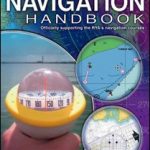Disclosure : This site contains affiliate links to products. We may receive a commission for purchases made through these links.
A Very Short Introduction to Navigation

From the Bronze Age mariners of the Mediterranean to contemporary sailors using satellite-based technologies, the history of navigation at sea, the art of finding a position and setting a course, is fascinating. The scientific and technological developments that have enabled accurate measurements of position were central to exploration, trade, and the opening up of new continents, and the resulting journeys taken under their influence have had a profound influence on world history. In this Very Short Introduction Jim Bennett looks at the history of navigation, starting with the distinctive cultures of navigation that are defined geographically – the Mediterranean Sea, and the Pacific, Indian, and Atlantic Oceans. He shows how the adoption of mathematical methods, the use of instruments, the writing of textbooks and the publication of charts all combined to create a more standardised practice. Methods such as longitude-finding by chronometer and lunar distance were complemented by the routine business of recording courses and reckoning position `by account`.Bennett also introduces the incredible array of instruments relied on by sailors, from astrolabes, sextants, and chronometers, to our more modern radio receivers, electronic equipment, and charts, and highlights the crucial role played by the individual qualities of endeavour and resourcefulness from mathematicians, scientists, and seamen in finding their way at sea. The story of navigation combines the societal, the technical, and the human, and it was vital for shaping the modern world. ABOUT THE SERIES: The Very Short Introductions series from Oxford University Press contains hundreds of titles in almost every subject area. These pocket-sized books are the perfect way to get ahead in a new subject quickly. Our expert authors combine facts, analysis, perspective, new ideas, and enthusiasm to make interesting and challenging topics highly readable.
Related Products:
 Modern India A Very Short Introduction
Modern India A Very Short Introduction
 Modern China: A Very Short Introduction
Modern China: A Very Short Introduction
 Modern Japan: A Very Short Introduction
Modern Japan: A Very Short Introduction
 Practical navigation for the modern boat owner
Practical navigation for the modern boat owner
 The First World War: A Very Short Introduction
The First World War: A Very Short Introduction
 The Conquistadors: A Very Short Introduction
The Conquistadors: A Very Short Introduction
 Translation: A Very Short Introduction
Translation: A Very Short Introduction
 Babylonia: A Very Short Introduction
Babylonia: A Very Short Introduction
 The Silk Road: A Very Short Introduction
The Silk Road: A Very Short Introduction
 Savannas: A Very Short Introduction
Savannas: A Very Short Introduction
 Biogeography: A Very Short Introduction
Biogeography: A Very Short Introduction
 The BRICS: A Very Short Introduction
The BRICS: A Very Short Introduction
 Modern Italy: A Very Short Introduction
Modern Italy: A Very Short Introduction
 The Antarctic: A Very Short Introduction
The Antarctic: A Very Short Introduction
 Postcolonialism: A Very Short Introduction
Postcolonialism: A Very Short Introduction
 The Palestinian-Israeli Conflict: A Very Short Introduction
The Palestinian-Israeli Conflict: A Very Short Introduction
 Contemporary Art: A Very Short Introduction
Contemporary Art: A Very Short Introduction
 Climate: A Very Short Introduction
Climate: A Very Short Introduction
 International Migration: A Very Short Introduction
International Migration: A Very Short Introduction
 Tides: A Very Short Introduction
Tides: A Very Short Introduction
 Landscapes and Geomorphology – A Very Short Introduction
Landscapes and Geomorphology – A Very Short Introduction
 Geophysics: A Very Short Introduction
Geophysics: A Very Short Introduction
 Intelligence: A Very Short Introduction
Intelligence: A Very Short Introduction
 Thinking and Reasoning: A Very Short Introduction
Thinking and Reasoning: A Very Short Introduction
 Astro Navigation Made Easy (using a pocket calculator)
Astro Navigation Made Easy (using a pocket calculator)
 France: A Short History
France: A Short History
 Geopolitics: A Very Short Introduction
Geopolitics: A Very Short Introduction
 Oceans: A Very Short Introduction
Oceans: A Very Short Introduction
 A Short History of Seafaring
A Short History of Seafaring
 RYA An Introduction to Navigation
RYA An Introduction to Navigation
 Short Circular Walks on the River Lee Navigation – Volume TWO
Short Circular Walks on the River Lee Navigation – Volume TWO
 RYA Navigation Handbook
RYA Navigation Handbook
 Shakespeare`s Comedies: A Very Short Introduction
Shakespeare`s Comedies: A Very Short Introduction
 Southeast Asia: A Very Short Introduction
Southeast Asia: A Very Short Introduction
 A Really Short History of Nearly Everything
A Really Short History of Nearly Everything
 The Renaissance – A Very Short Introduction
The Renaissance – A Very Short Introduction
 A Short History of the World in 50 Animals
A Short History of the World in 50 Animals
 Navigation Through the Ages
Navigation Through the Ages
 A Short History of the World
A Short History of the World
 Telescope – A Short History
Telescope – A Short History






























